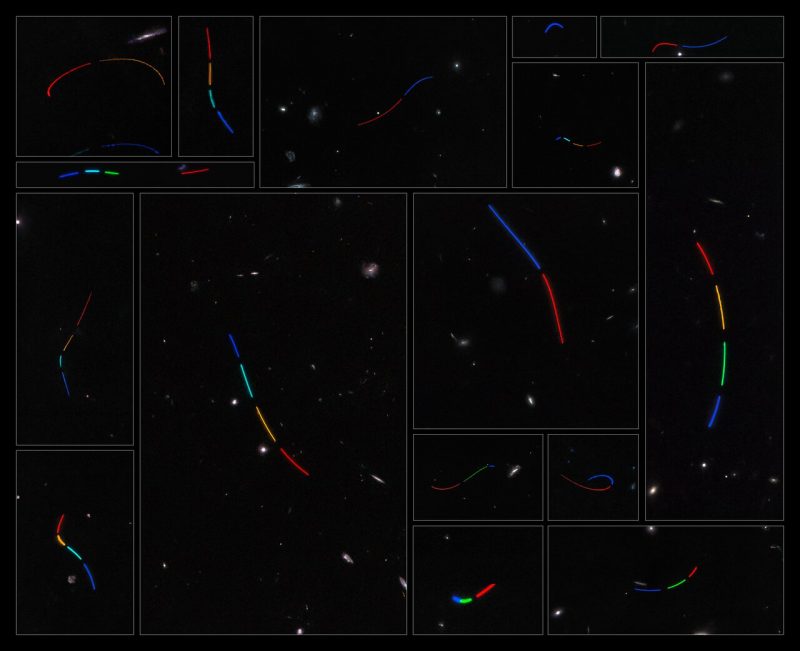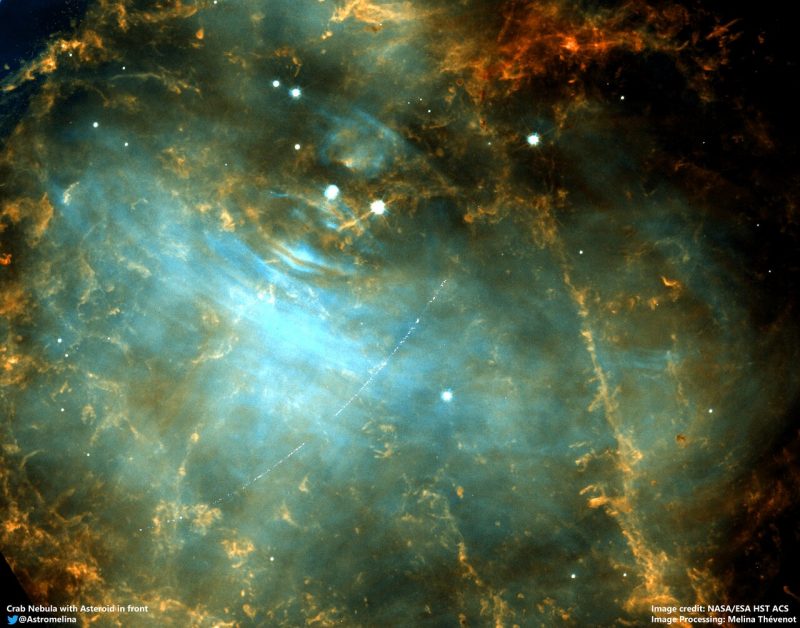
Asteroids photobombed Hubble images
For nearly three years, citizen scientists have been scouring Hubble Space Telescope images, looking for the telltale arcs of asteroids passing between the telescope and deep space. This month (May 6, 2022), the European Space Agency announced the results of this search, which had been dubbed the Hubble Asteroid Hunter. ESA said the citizen scientists located some 1,701 asteroids in all, including 1,031 that were previously unknown.
First, astronomers identified more than 37,000 composite images that Hubble took between April 2002 and March 2021 with its ACS and WFC3 instruments. Hubble can stare at an object, such as galaxy or nebula, for an average of 30 minutes. Therefore, the closer, moving asteroids show up as curved lines or streaks in front of the background objects.
Next, more than 11,400 volunteers analyzed and classified the images. The volunteers helped spot more than 1,000 asteroid trails, which allowed artificial intelligence to learn what to look for from their discoveries. Eventually, the teamwork of both citizen scientists and AI resulted in the discovery of 1,701 trails in 1,316 Hubble images.
As a bonus, the participants also tagged other objects they saw on the images, such as gravitational lenses, galaxies and nebulae. A forum helped volunteers chat with each other and scientists as they discussed their findings.

Identifying asteroid trails
Known and catalogued asteroids made around one-third of the asteroid trails. That left 1,031 trails from previously unidentified asteroids. These asteroids are probably small and faint, lying farther from Earth and in the main asteroid belt.
Asteroids are small remnants leftover from the formation of the solar system. So, astronomers hope that learning more about these small, distant asteroids will help them have a better understanding of the conditions in the early solar system.
Now astronomers have a new tool for finding asteroids in astronomical archives spanning decades. This is an approach they can use with other datasets.

What’s next for the asteroid trails?
Exploring the 1,031 streaks of previously unknown asteroids is the next step in the project. Scientists would like to characterize their orbits and study their properties, such as their sizes and rotation periods. Hubble imaged most of these asteroid streaks many years ago, therefore, they can’t follow them up now to determine their orbits.
What they can do, is use Hubble and the parallax effect. When Hubble orbits Earth, it takes images from each side of its orbit. By knowing the position of Hubble during the observations and measuring the curvature of the streaks, astronomers can determine the distances to the asteroids and estimate the shapes of their orbits.
Parallax is also the reason the asteroid trails looked curved in the images.
Additionally, some of the longer Hubble observations allow the measurement of a light curve for the asteroids. This information can help them measure the rotation periods and infer the shapes of the asteroids.

Bottom line: Citizen scientists, as part of the Hubble Asteroid Hunter project, have identified 1,701 asteroid trails, and 1,031 of those streaks are from previously unknown asteroids.
The post Asteroids photobombed deep Hubble images first appeared on EarthSky.
0 Commentaires